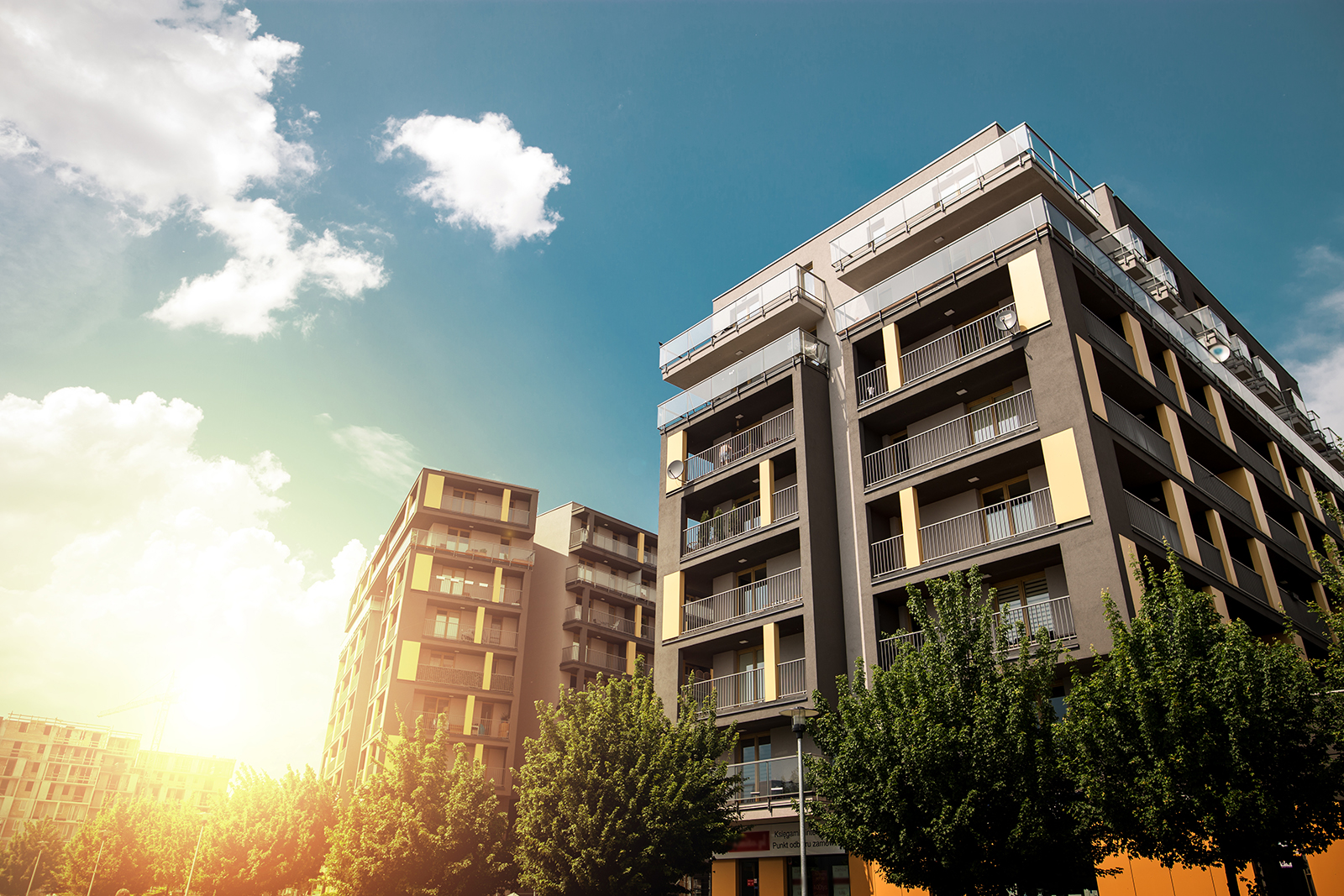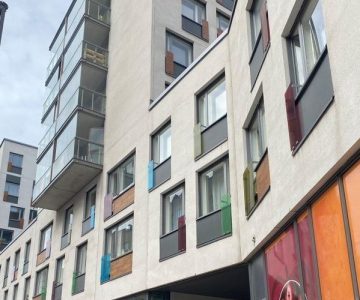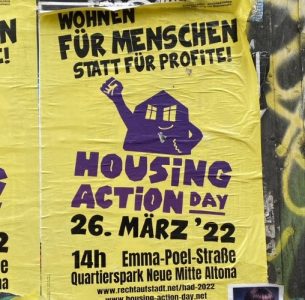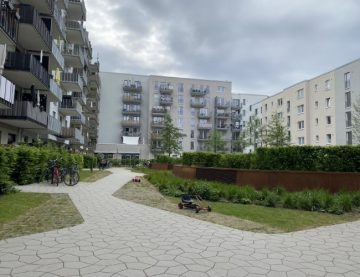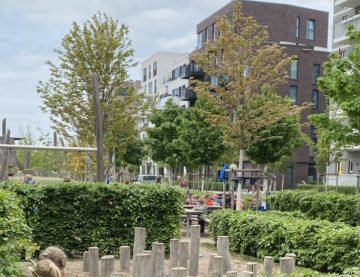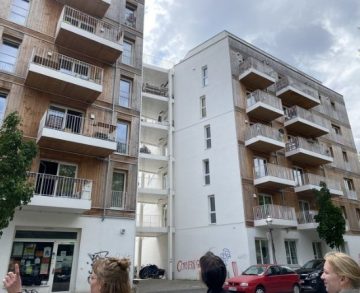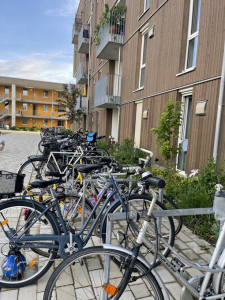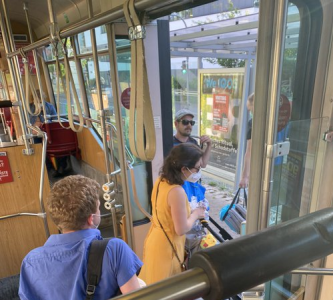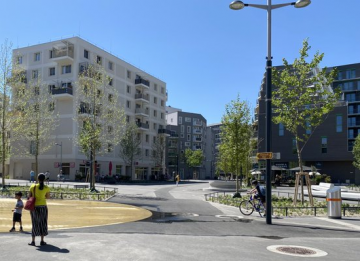The Canada Mortgage and Housing Corporation (CMHC) reported that Canada has a shortage of 3.5 million homes that should be added to existing rates of 2.3 million homes by 2030.
This report follows on the heels of a $4 billion Housing Accelerator Fund (HAF), announced in April’s federal 2022 Budget.
HAF’s aim is to “grow the annual housing supply in the country’s largest cities every year, creating a target of 100,000 new middle-class homes” by 2026. The emphasis on new supply has been recommended by a series of taskforces, like the BC-Canada Expert Panel on the Future of Housing Supply and Affordability, arguing that the federal government work directly with municipalities to support scaled-up affordable supply.
Housing for whom?
HAF is being administered by the CMHC under the rubric of the 2017 National Housing Strategy. This Strategy commits the federal government to work with other orders of government, using a human rights-based approach, to: (a) lift 530,000 households living in core housing need (unaffordable, overcrowded, or inadequate housing) into adequate homes by 2028 (of approximately 1.7 million largely renter households identified as living in housing need in 2016) and (b) eliminate chronic homelessness by 2030.
The National Housing Strategy Act (NHSA), adopted in 2019, further stipulates that the Government of Canada commits to implementing housing as a fundamental human right throughout its programs, policies, and budgetary decisions–including through its spending power for housing programs in other jurisdictions. The NHSA mandates the federal government to use a maximum of its available resources to ensure adequate housing for all, prioritizing those in greatest need.
HAF is a reworking of the 1975 Federal Housing Action Plan, whose objective was to stimulate the residential construction industry to ensure an adequate supply of housing to meet the needs of low- and moderate-income families. Our research indicates that the majority of households in core housing need have very low incomes (less than 20% Area Median Household Income – AMHI), low incomes (21-50% AMHI) or moderate incomes (51-80% AMHI). In fact, the average income for households in core need is $23,000, equating to a monthly maximum rent of $575. This contrasts with “affordable” rents of well over $2,000/month for 2-bedroom homes under the Rental Construction Finance Initiative, the NHS’s largest program. In Ontario alone, there are almost 36,000 households in core housing need who can afford no more than $352 per month. Another 484,000 households can afford between $353-879 per month, including 109,000 three plus person households requiring at least two-bedroom homes.
Hang on! Is it even possible to create new 1.7 million homes renting at an average of $575?
The short answer is “Yes, if governments act together”.
For the moment, set aside the key mechanisms determined by the provincial government: big things like welfare rates, which have not substantially increased since the 1990s, or absence of renter protection causing widespread evictions of low and moderate income tenants. These can and should be addressed by federal bilateral agreements with provinces and territories as part of the NHS.
Focus instead on what municipalities and the federal government could do together. That federal-municipal combination has already worked for the Rapid Housing Initiative, the only NHS program that has exceeded its targets in addressing core housing need (other programs haven’t even come close to meeting their targets).
Considerable international research agrees on six key mechanisms to drive down the cost – and speed up the construction – of new affordable housing:
- Free leased land: HART is currently mapping all suitable and well-located government and non-profit land – federal, provincial, municipal, as well as land held by agencies such as public transit for 13 governments across Canada. If that land were leased at no cost (including building on top of: libraries, health centres, post offices, transit stations), 15-30% of housing cost would be eliminated without direct subsidy. This approach has been successful in Vancouver and modelling in Kelowna has shown that it has enough government land to meet core housing need.
- Non-profit developers: Research from Vancouver shows that housing that has its mission perpetual affordability (not 10-20 years as for federally subsidized speculative developers, but a minimum of 99 years) can provide a further 20-25% savings, simply by eliminating the maximizing profit element from private sector housing
- Scale: Industrializing construction, including pre-fabrication, can save money and time. Developments with 100 homes can achieve 42% savings over developments of fewer than 20 homes. Removing parking requirements is a quick way to remove up to 27% of costs.
- As of right development: Transforming exclusionary zoning – which restricts development in the majority of well-located areas in cities like Toronto, Vancouver and Edmonton – would open up land to higher density, more environmentally sustainable and affordable homes. Density bonusing for non-profit developers (as is the case in Portland) and as-of-right approvals processes that bypass NIMBY delays (as is the case in Victoria) has a huge impact on the viability of non-profit affordable housing.
- Construction subsidy plus low cost (and low interest) financing for non-profit housing: This should be the focus of a renewed Co-Investment and Rental Construction Initiatives, as signalled by their review in Budget 2022.
- Prioritizing Rent Subsidies for Non-Profit Housing: Quebec provides almost all of its household rent subsidies to non-profit housing, rather than private providers. It is, quite simply, the least expensive way to help the most households.
Modelling in Vancouver shows that the first three mechanisms alone (with no government subsidy) can create new homes with rents of $1,765, which is at the upper end of what a moderate income household could afford. The fourth mechanism doesn’t cost anything and should be a requirement for HAF funding. Mechanisms 5 and 6 require re-shaping of existing NHS programs that should be done as part of a renewed NHS.
Nice idea! But does that actually happen anywhere?
Yes, we’ve profiled eight European cities that have no problem producing rents of $575 for a two-bedroom apartment.
Let’s start with a little “league table” on non-profit housing production:

Source: Housing 2030 Website – www.stateofhousing.eu
Austria, Finland, Sweden, the Netherlands, France and Scotland are producing the equivalent (adjusted for population) of 41,500 to 72,000 new non-profit homes a year. Compare this to Canada’s targets of 16,000 “affordable” homes per year (but is $2,000/month affordable?) – and those weak targets aren’t even being met.
Helsinki, Finland: Political Consensus
Finland has reduced homelessness by 33% between 2007 and 2021 through a coordinated “Housing First” strategy. This includes providing permanent homes with no conditions – as there often are in emergency shelters and transitional housing in Canada. Homes First isn’t just about housing: it is about services, decent welfare rates, and preventing evictions (5,000 last year in Helsinki alone).
Finland has big non-profit providers who can provide good homes and services at scale. The Y Foundation, the 4th biggest landlord in Finland, with about 18,000 homes, points to the importance of a growing political consensus over 30 years about what works. The Housing First program was introduced by a conservative government, who saw the economic benefits of preventing and ending homelessness. Later governments saw it worked.
There simply weren’t enough affordable homes to rent, so FInland started building. And this is part of a larger commitment to non-profit housing that is sometimes forgotten in the media interest in Housing First. Kalasatama, the former port in Helsinki (the main port has moved) will have homes for 30,000 people, with 10,000 jobs, when completed. Furthermore, the aim is a fully carbon-neutral development, with district heating. Even though it is only mid-way towards completion, the trams and wide separated bike paths are already in place (you can get there from Helsinki in 25 minutes by tram, bike or electric scooter). Helsinki has only 650,000 people, the size of the City of Vancouver. Imagine a new affordable neighbourhood of 15,000 homes in Vancouver, with 30% social housing, a further 25% with rents regulated to affordable levels, and only 45% ownership or unregulated rental. Just imagine that kind of city-building political will and then ask yourself why it isn’t there (with the exception of the Squamish Nation).
Stockholm, Sweden: Technical Know-How
The Canadian government directly built and financed over a million low-cost homes for returning servicemen and their families between 1944 and 1960, when its population was 12 million. The problem was that it sold those homes. So a CMHC-financed low-cost home in Toronto that was rented, then sold for $19,000 in 1959 (three times a moderate annual income) sold again in 2021 for over $2 million (about 20 times a moderate income).
Sweden was even more ambitious post-war. With a population that was then a little over six million, it produced one million non-profit affordable homes between 1965 and 1975, the backbone of their more environmentally sustainable cities. Erik Stenberg, an architecture professor at KTH University in Stockholm, has spent a lifetime researching modular housing. As he says, Sweden is considering another Million Program, but “by whom? For whom?” is the issue.
With standardized modular housing, a new two-bedroom home could be built in 10 days. What is more, modular prefabricated homes are energy efficient and easily adaptable to add accessibility – or to change the configuration as households change. Stenberg recently converted two adjacent two-bedroom apartments after the occupants of one home died and the other resident was an aging empty nester. Now there is a one-bedroom for the older person, and a five-bedroom and two-bathroom home for a newcomer Syrian family. Not only has prefabricated modular become the norm in Sweden, that industry led to new spillover industries -like Ikea, whose furniture was sized to fit into these standardized homes.
Paris, France: Neighbourhood Win-Win
Twenty years ago, France created targets of 20% public housing for all municipalities – and fined those municipalities that did not meet those targets. Through changes in government, these public housing targets have actually increased: to 30% by 2030.
Paris uses a range of mechanisms to achieve these targets. Acquisition makes up 50% of public housing: using the ‘right of first refusal’ also exercised in Montreal, it can make ‘pre-emptive bids’ for existing apartments.
Caserne de Reuilly is a new development of 582 homes, primarily for families but with one building for students (who aren’t even counted in core housing need numbers in Canada), within the wealthy 12th arrondissement. It has seven buildings, all designed by different architects, some re-using the old army barracks that existed before the City of Paris bought the property. How did the neighbourhood react to this new social housing? Since the development also included a new 4800 m2 public park, a childcare centre with 66 spaces, and 44 new trees – it was a welcome addition.
Germany: Creating Democratic Communities
There are four (of many) cities in Germany used for case studies here: Hamburg, Berlin, Munich, and Freiberg. They each had lessons for Canadian cities.
After Germany reunified in 1990, a lot of public housing in the former East Germany and also in West Berlin was sold. But Germany is a rich country of renters, where cooperative housing generally leases for life. Tenant voices shape policy, with cries of “housing for people, not profit” and “this building is in the hands of tenants and that is good”.
Hamburg, Germany’s second largest city, with a population of 1.8 million (think City of Montreal) has a “rule of thirds”: its targets for new development are 33% non-profit, 33% rent-regulated, and 33% unregulated private sector.
Mitte Altona is a new ‘missing middle’ development of 800 homes so far, on former rail yards. One third is social housing but it is impossible to tell which buildings are non-profit. As is the case in Paris, generous green space knits people together.
In Berlin, there is a new co-op in the Wedding neighbourhood, with clustered housing for people with dementia, and for those who were recently homeless. There is also family housing, with a communal wood fired bread oven used by all the 98 households.
In Munich’s Prinz Eugen Park, there are 700 public homes, 300 co-op homes or 800 privately owned homes which are indistinguishable from each other – which surely is the point of a mixed-tenure and mixed income new development. And again, it was a 30-minute electric scooter ride from downtown, with tram lines extended well before development began, and schools, cafes and grocery stores being built with the first homes. Affordable, zero carbon living.
Finally in Germany, the legendary Vauban in Freiberg is perhaps the first low-carbon community in the 1990s. What people don’t generally talk about is its commitment to affordability. The 3000 homes are mostly co-op or self-financed housing. Wolf Daseking, the planner who designed it, has one regret: that more homes weren’t non-profit. There is also a 30-year-old informal community within Vauban, very much a part of that neighbourhood. Furthermore, parking and car-centred infrastructure is minimal, creating a very eco-community.
Vienna, Austria: A century of non-profit housing
Finally, Vienna – a city with a century-long history of social housing, where public transit is rarely more than a five minute wait. It is a city of short distances and social democracy, one that hires famous artists to design world-renowned public housing which proudly proclaims: “built by the City of Vienna with your property taxes”.
In Aspern Seestradt, a new suburb of 10,000 homes and an equal number of jobs, two thirds of the homes are non-profit and there is already a book store and public toilets, two essentials for any good neighbourhood. A former airfield, the City of Vienna, assisted by the federal government, ensured that was a train line, local busses, shops, schools, etc. before people moved in.
Conclusion
Canada has a higher Gross Domestic Product (wealth) than Finland, Sweden and Austria, and a higher GDP per person than Germany or France. So why do we act like a poor country when it comes to bold ideas to save lives and make cities better?
The Housing Accelerator Fund could be a reset – the moment that the Canadian government works with municipalities to create a St. Lawrence Neighbourhood (4,000 homes, two thirds non-profit, downtown Toronto, 1970s) in every city – and maybe six more in Toronto. Low and moderate homes can be built to address core housing need – and also meet goals of accessibility, carbon-neutrality, construction job creation, and greater urban amenity for all. But it takes: free land, non-profit development, sufficient scale, as of right expedited approvals, construction assistance, and sometimes, further rent subsidies to progressively realize the right to adequate housing. In return, people get homes, cities get affordability- and federal governments actually solve the problems it has identified in successive reports.,
Dr. Whitzman visited these cities on a self-funded study tour as part of the writing of her new book “How to Home: Canada’s housing crisis and how to fix it” (On Point/ UBC Press, forthcoming in 2023)
